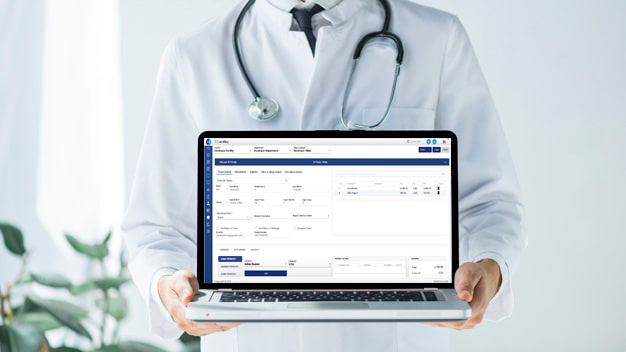Transform Your Practice: Switch to Electronic Medical Records!
August 30, 2022Medical institutions prioritize managing patient data as one of their most critical tasks. For a long time, paper-based record-keeping has been the norm. However, as the data landscape changes rapidly, it is increasingly influenced by the advent of Electronic Medical Records (EMR) or Electronic Health Records (EHR). Moreover, these technologies are reshaping how healthcare providers manage patient information, enhancing efficiency and improving patient care. Consequently, organizations must adapt to this evolving environment to stay competitive and meet the demands of modern healthcare.
While many consider manual record-keeping the gold standard, multiple medical institutions have increasingly focused on electronic workflows in recent years.
Deploying an Electronic Medical Records Software has proven benefits for various hospitals and clinics, both on a small and a larger scale. The Healthcare
Depending on the various factors that concern the hospital authorities, this article will examine in depth the difference between Paper-Based and Electronic Health Records (EHR) software.
Ease of Data Management
Catering to thousands of papers, files, and reports can get challenging because the physical space required to maintain manual data is much larger. They require proper management and sorting of every document to ensure easy access whenever needed. Management might need temperature-controlled rooms to ensure data integrity.
Paper-Based
Electronic Medical Records (EMR)
A cloud server stores and sorts the digitized documents as needed. The management can opt from the different types of cloud server as per the requirement.
Layout Consistency
Paper-Based Records
This form of data is highly inconsistent because various individuals handle it. At times, unclear handwriting or differently formatted information appears in different sections. These nuances can cause inconvenience amongst the authorities who need to access it.
Electronic Medical Records (EMR)
Set formats for each data type make understanding and studying the stored information easier. Users fill out the formats in a standard way.
Accessibility of Data
Paper-based Records
Accessing data concurrently is not feasible in this methodology. Portability of papers and folders take time and therefore reduces efficiency.
Electronic Medical Records (EMR)
Since the data is available on the cloud, it can be accessed across the globe by the desired authorities. Considering the concept of remote consultations and working has been on the rise, EMR is the key to make it possible.
Vulnerability to Errors
Paper-based Records
Human error is inevitable, and therefore, paper-based records are prone to such mistakes. Hospital management must maintain the highest order of caution while scripting the records.
Electronic Medical Records (EMR)
Digitized data is less susceptible to errors, and reduces the risk there. With the help of proper training, the staff can get acquainted with the program and use it effectively to store critical information.
Time-Saving
Paper-based Records
Managing huge paper trails and files can be tricky. Not just that, storing information manually is a time-consuming affair. A greater share of the work hours is dedicated to the paperwork, reducing the focus on the more critical jobs.
Electronic Medical Records (EMR)
EMR/EHR software makes it easy to store data and generate reports. Additionally, digital workflow management significantly saves time and optimizes staff work efficiency. As a result, healthcare providers can focus more on patient care rather than administrative tasks, enhancing overall service delivery.
Scalability of Data
Paper-based Records
These records are hard to be shared and accessed using different means. While people have a comfort level with physical folders, those are scalable to an extent.
Electronic Medical Records (EMR)
As stated earlier, the data is saved in cloud-based servers and is scalable to significant limits. Cloud is an unending storage unit.
Cost Efficiency
Paper-based Records
Except for the storage bit, maintaining physical folders is cost-efficient. Since it is a familiar way of storing
Electronic Medical Records (EMR)
A cloud-based server can be expensive if the management chooses to get an in-house IT team; it will cost even more. However, maintenance is relatively lower.
Security
Paper-based Records
Data security is cardinal to medical institutions; the information is confidential and has to be protected. Physical
Electronic Medical Records (EMR)
Only authorized individuals can edit, maintain, or view electronic information. It is highly protected, minimizing the possibility of a breach.
Maintaining Backups
Paper-based Records
Keeping a backlog of paper records is very difficult, it will double not only the work but also the space required for storage. So, there is no backlog of data stored in physical forms.
Electronic Medical Records (EMR)
Cloud-based systems update with new technology and maintain a backlog of the entire database, allowing quick recovery of lost data in its original format.
Organizations have a regular backup process in place to make sure the safety of their data.
Softclinic Electronic Medical Records Software
SoftClinic leverages its extensive healthcare IT experience to provide EMR software that is easy to adopt and customizable to meet specific needs. With top-notch post-development support, Softclinic has an active user base in 40+ countries.
Key Features of SoftClinic EMR
- Generate Prescriptions in less than 60 seconds.
- Easy to use patient visit details (OPD/IPD) modules.
- Detailed demographic and clinical data analysis.
- Billing and account manager for your accounting needs.
- Available in 6 specialities
Conclusion
It is ultimately the choice of management. The bottom line is one must choose the solution that sails the boat for their workplace.
While each of the given options, the traditional and the modern way of storing data, have their consequences and benefits, the management also has a third option. Customized solutions are available in the market that hospitals and clinics can use to enhance their operations.
Also Read: Features that Your Online Telemedicine Platform Must-Have

